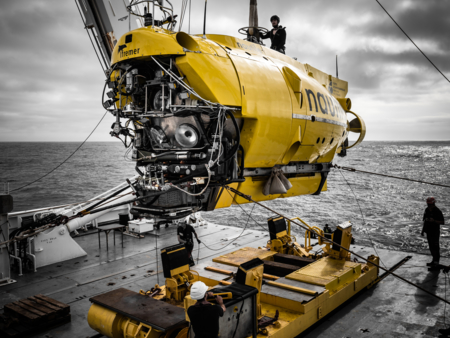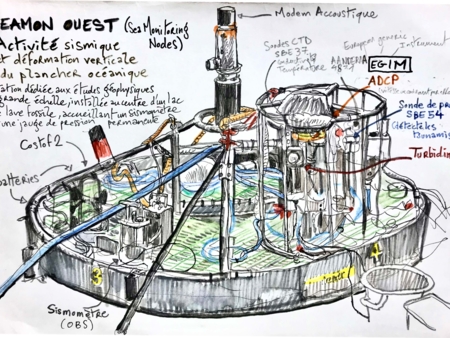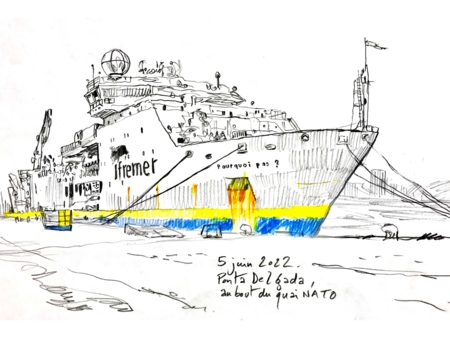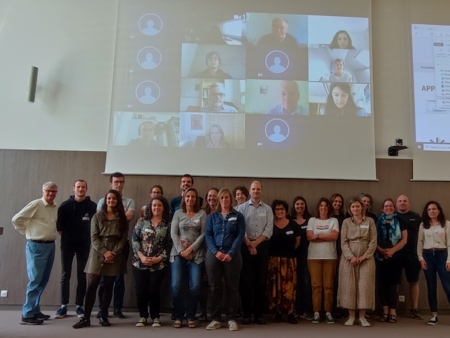Congratulations to Ugo Massé for his Master’s internship!
Abstract of Ugo’s report: With the fight against climate change and the stated desire to switch from fossil fuels to renewable energies, metals are necessary resources to lead the energy and ecological transition. However, the decline in their accessibility on land and the estimated needs to achieve the goals set by nations are turning some economic and political actors towards the minerals located at the bottom of the ocean, up to several thousand meters deep. Due to the particular location of resources, their exploration and exploitation are managed by an authority acting under the aegis of the United Nations, the International Seabed Authority (ISA). This authority is currently in the process of developing the mining code, which will govern the exploitation of resources of the Area (seabed outside national jurisdictions). In a context where the beginning of the exploitation of polymetallic nodules and polymetallic sulphides of the Area seems closer and closer, the issues relating to such an activity are numerous and the start of operation remains uncertain. Identification of potentials triggers and brakes at the start of exploitation in deep water is necessary for the development of an appropriate governance framework in a political-legal context particularly complex related to the location of these resources. This situation led to the establishment of the following problem: How to identify and prioritize the issues, triggers and barriers related to seabed mining?
Although literature reviews exist on the subject of the issues, barriers and obstacles relating to seabed mining, these are concentrated generally on a few aspects, such as environmental, social, or legal. Through this research question, this work mobilizes the PESTEL analysis framework (for political, economic, social, technological, environmental and legal), originally used in the industry and business sector, to identify the potential triggers and barriers related to seabed mining stated in the literature in order to conduct more comprehensive coverage. In addition, the work applies this analytical framework to a stakeholder workshop organized as part of the DEEP-REST research project mobilizing the expertise of the stakeholders for the identification of the issues. The actors mobilized belong to the categories of industry, non-governmental organizations environmental organizations, academic researchers and political authorities and decision-makers.
The results relating to the identification of the main triggers and obstacles to seabed mining obtained by the two methods (literature review and stakeholder workshop) present many commonalities. Regarding the results obtained during the workshop, the request for minerals (and access to them) and profitability of operations are the potentials economic triggers the most mentioned. The main obstacles to seabed mining are the social and environmental externalities. As such, establishing a social license operations and filling gaps in environmental knowledge may be required for operation to start. The challenge of technological feasibility, the movements in favour of a moratorium on exploitation and the drafting of the mining code by ISA also emerge from the literature and the workshop. However, some notable differences appeared between the literature review and the actor workshop, with, for example, the mention of the “counter-lobbying” of the terrestrial mining industry by some participants in the workshop, and operating pilot projects not conclusive or with environmental impacts too important.
The main limitation identified with the use of the PESTEL analysis framework is related to the fact that certain factors are sometimes found in more than one category, making it difficult to in-depth analysis of the relative importance of the different categories of factors identified in literature and by actors. The small number of participants in the group of authorities and political decision-makers during the workshop also constitutes a limit to the results. Conducting individual interviews with actors not present during the workshop would allow to deepen the identification of the issues. Nevertheless, this work shows that the approach allows an initial identification and prioritization of the issues to be considered in scenarios on the possible modalities of implementation of seabed mining in relation to the conservation and restoration of deep-sea ecosystems.





